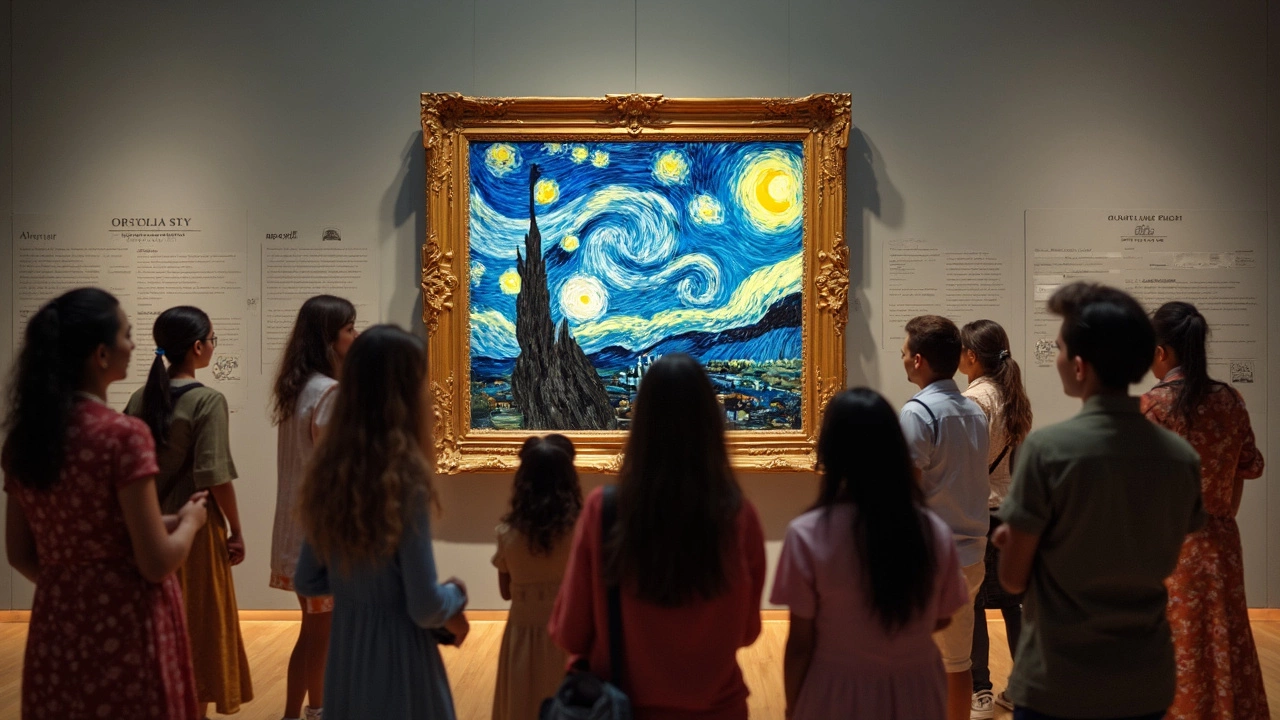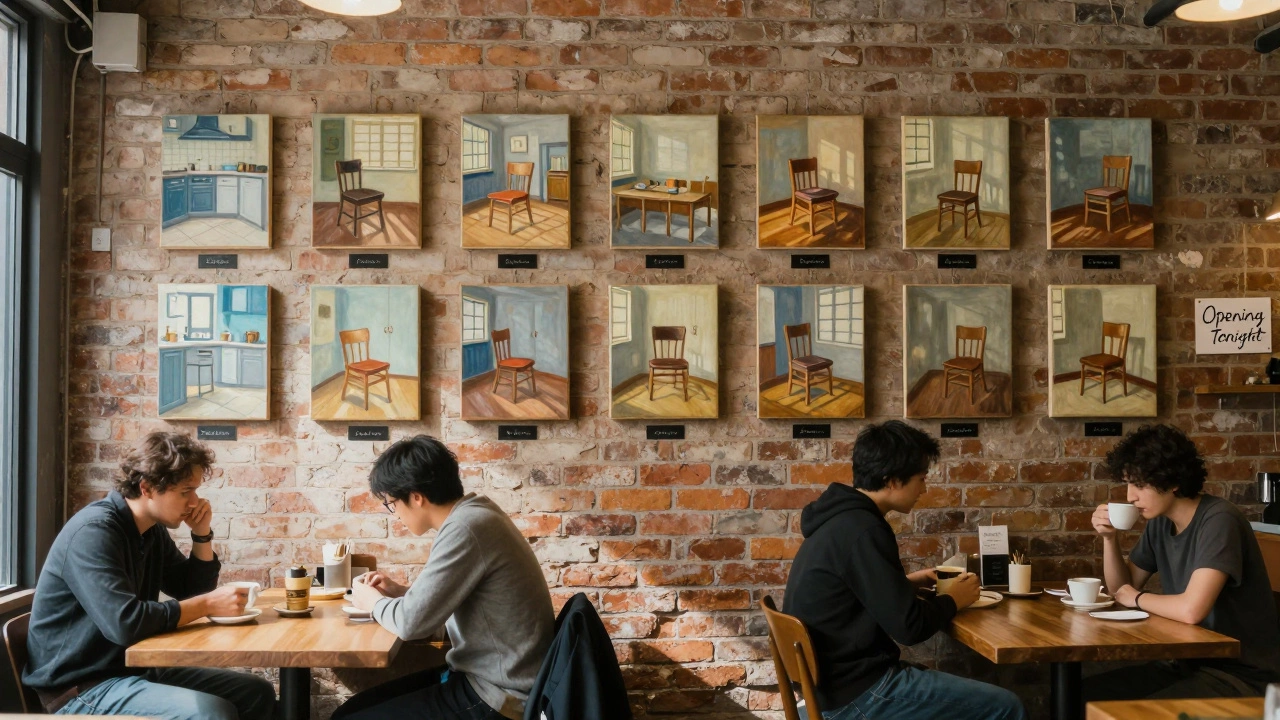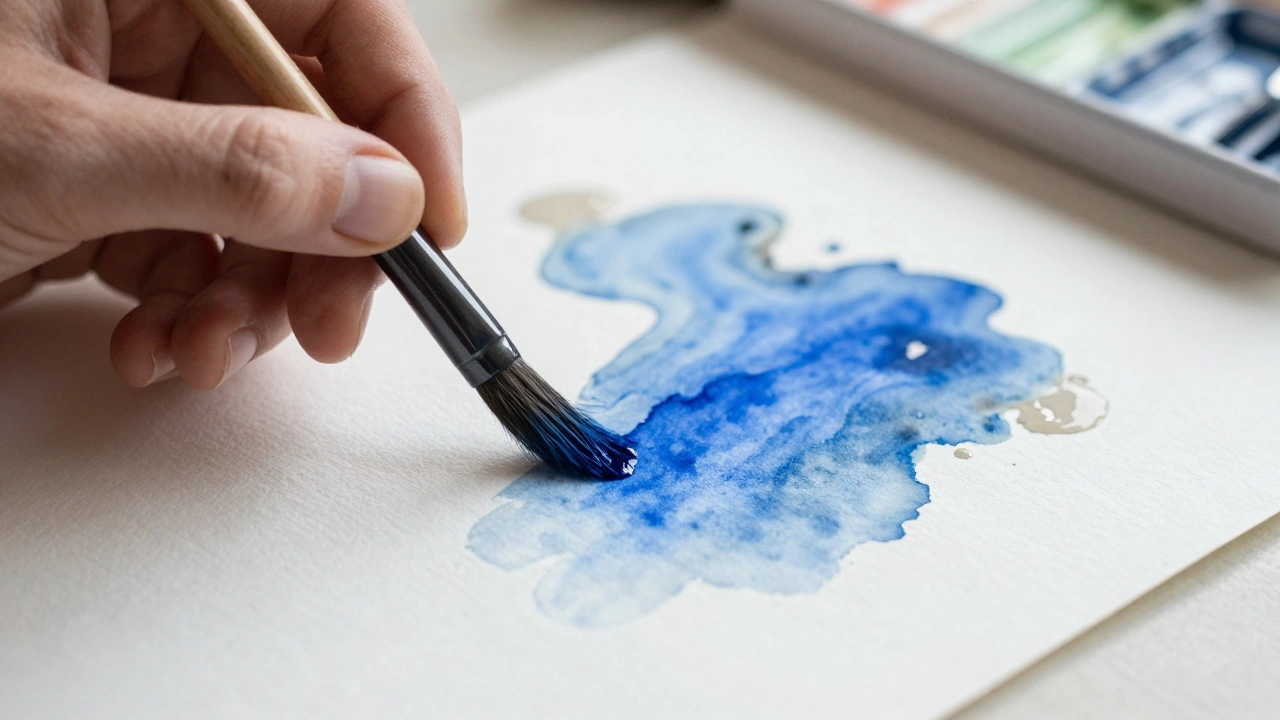Think about it: Van Gogh’s Starry Night is probably one of the most famous paintings in the world. But who really owns this masterpiece? No, it’s not locked away in a billionaire’s mansion or stored under armed guard for some mysterious collector. It hangs out in plain view at the Museum of Modern Art (MoMA) in New York City—and it’s been there since 1941.
You might hear wild rumors online about secret auctions or long-lost relatives claiming it, but the truth isn’t so complicated. The painting was actually donated to MoMA, and now the museum owns it. So, it’s not for sale, and it isn’t going anywhere soon.
If you’re planning a trip and want to see Starry Night in person, you’re in luck. MoMA puts the painting right on the fifth floor, so all you need is a ticket and a bit of patience—it gets busy. Next time someone tells you a crazy story about who owns Starry Night, you’ll know the real answer.
- The Story Behind Starry Night
- Who Actually Owns the Painting
- How Starry Night Ended Up in New York
- Common Myths and Mistaken Beliefs
- Tips for Seeing Starry Night Up Close
The Story Behind Starry Night
If you spot Starry Night in person, you’re not just seeing a pretty painting—you’re staring at a piece of Vincent van Gogh’s wildest years. He painted it in June 1889 while he was living at an asylum in Saint-Rémy-de-Provence, France. Yep, an asylum. Van Gogh checked himself in after some tough mental health struggles, and this painting is a direct look at what was going on inside his head.
He didn’t paint the night sky as he saw it through his window. Instead, he pulled together memory, imagination, and what he felt. The swirling stars and bold colors say way more about emotion than about reality. The village? That’s made up too. There wasn’t a Dutch-style village outside his window—he just added it because it felt right to him. That’s classic Van Gogh.
What’s wild is that Van Gogh himself wasn’t even a big fan of the work. He called it a "failure" in his letters, and he worried people wouldn’t get what he was trying to do. But today, Van Gogh and Starry Night are icons. People see those bright swirls and instantly know the painting, whether they’ve set foot in MoMA or not.
- Van Gogh used oil paints on canvas and finished the work in under a month.
- He sent the painting to his brother Theo, who always supported him even when nobody else did.
- The painting wasn’t famous right away. It took decades for the world to catch on.
Starry Night is a real story of mixing pain, hope, and creativity—proof that even in his darkest times, Van Gogh made something the world can’t stop talking about.
Who Actually Owns the Painting
When most people see Van Gogh's Starry Night, they wonder who the lucky owner is—maybe a super-rich art collector or a royal family? It's actually much simpler: the Museum of Modern Art (MoMA) in New York City owns the painting.
Starry Night became part of MoMA’s collection back in 1941, thanks to a donation from Lillie P. Bliss’s estate. Bliss was one of the museum’s founders, and her art gifts helped shape MoMA’s reputation. What matters for fans is that MoMA doesn't just display it—they own it outright. There’s no behind-the-scenes trust, loan, or private owner involved. It’s on permanent display, which means you won’t suddenly see it swapped out for another artwork or yanked for a private auction.
Art lovers sometimes worry that priceless paintings jump from museum walls into private hands, especially when money talks. Not the case here. MoMA is a nonprofit—so this painting sits in public trust. In simple terms: it's about as close to 'owned by everyone' as a famous painting gets. No single person profits from it, and it isn’t going to disappear into a secret vault.
If you want to keep track of the painting’s facts, here’s a quick breakdown:
| Fact | Details |
|---|---|
| Current Owner | Museum of Modern Art (MoMA), New York |
| Ownership Status | Permanently owned by MoMA—not on loan |
| How MoMA Got It | Donated by the estate of Lillie P. Bliss in 1941 |
| Last Known Sale | Never sold at auction; donated to MoMA |
Bottom line: If you see speculation online about secret deals, ignore it. Starry Night is locked into MoMA's care. That means you, me, and millions of art fans all get an honest shot to see it in person, without worrying someone will whisk it away overnight.
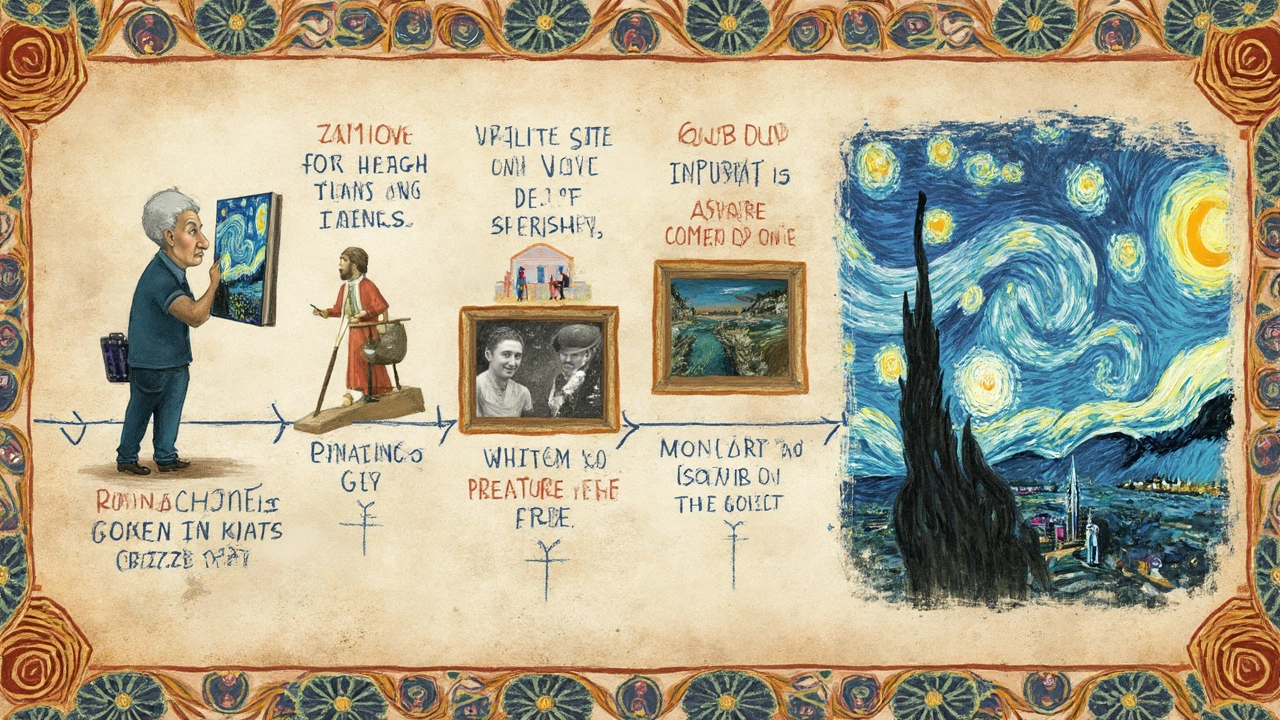
How Starry Night Ended Up in New York
So how did Van Gogh's Starry Night make its way to the Museum of Modern Art in New York? Let’s skip the guessing game and look at the facts. Van Gogh painted Starry Night in June 1889, while he was in a French asylum. He died in 1890, so he never sold the painting himself. After that, Starry Night basically bounced around Europe before it ever crossed the Atlantic.
First, Van Gogh’s younger brother, Theo, owned it. Sadly, Theo died only a few months after Vincent. The painting stayed with Theo’s widow, Johanna van Gogh-Bonger. She really pushed for Van Gogh’s work to get noticed—she loaned and sold his paintings to museums and collectors. For decades, Starry Night mostly stayed in private European hands or on loan to Dutch museums.
Fast-forward to the 1940s in New York. Lillie P. Bliss, one of MoMA’s founders and an important modern art collector, died in 1931 and left a chunk of her collection and a fund to MoMA. Using these resources, MoMA was able to purchase Starry Night in 1941 from Paul Rosenberg, a well-known French art dealer who’d gotten the painting from the Van Gogh family. It wasn’t some wild bidding war or secret transaction—the whole thing was above board and well-documented.
| Year | Event |
|---|---|
| 1889 | Van Gogh paints Starry Night |
| 1890 | Theo van Gogh inherits the painting |
| 1891–1938 | Passed among Van Gogh family and collectors |
| 1941 | MoMA purchases Starry Night from Paul Rosenberg |
These days, if you want to see Starry Night, you don’t need to track down some secretive art owner. Just head to MoMA and look for the crowds—it's almost never alone on the wall.
Common Myths and Mistaken Beliefs
There’s no shortage of wild stories floating around about Van Gogh’s Starry Night. But what’s actually true, and what’s just rumor? Let’s clear things up with real facts and numbers.
One of the biggest myths is that Starry Night is owned by a private collector, maybe a major celebrity or a billionaire art fan who keeps it stashed away. Totally false—nobody in the private market owns this painting. Since 1941, the Museum of Modern Art (MoMA) in New York has been its legal owner, thanks to a donation by Lillie P. Bliss, a founding trustee.
Some folks think MoMA might put Starry Night up for auction and make a fortune. Nope. Museums like MoMA rarely sell—or "deaccession"—blockbuster artworks, and Starry Night’s value as a museum “star” is way higher than any price tag you could put on it. As of 2025, there’s zero chance it’s leaving the walls of MoMA.
Another common belief is that the painting gets loaned out to other museums for special shows. That’s not true, either. The painting is pretty fragile, so MoMA keeps it on site almost all the time. If you want to see it, you’ll need to go to New York.
It’s also easy to confuse the original Starry Night with the tons of licensed reproductions and posters sold online or in stores. The real deal never leaves MoMA—and it’s not for sale or rent, no matter what certain websites might claim.
| Myth | Fact |
|---|---|
| Private collector owns Starry Night | MoMA has owned it since 1941 |
| Painting might get sold at auction | MoMA doesn’t sell its masterpiece works |
| Regularly travels to other museums | Starry Night stays at MoMA due to its fragility |
| You can buy the original online | Only posters and prints are for sale, not the real artwork |
If you hear anything else about Starry Night changing hands or showing up in a new city, check the MoMA website or trusted news sources first. The real story is a lot more low-key—and way less dramatic—than the rumors make it seem.
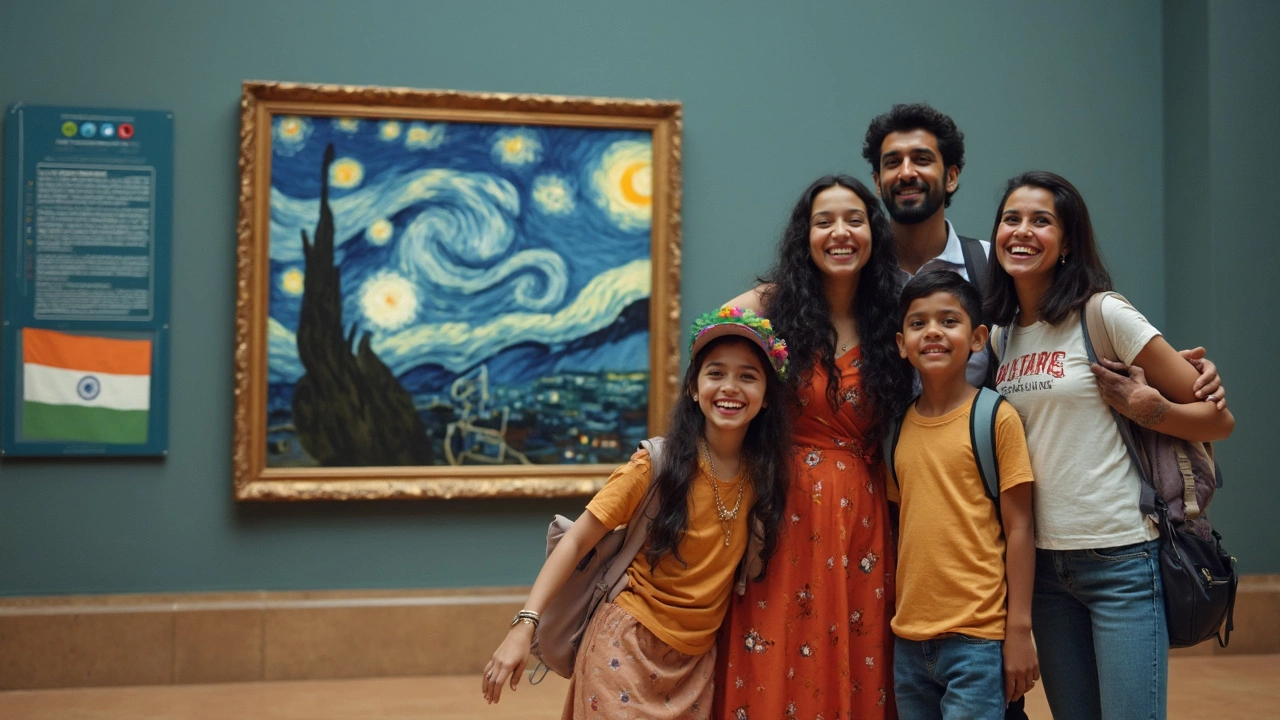
Tips for Seeing Starry Night Up Close
Ready for your moment with Starry Night? Here’s how to make it count at MoMA. First, Van Gogh's masterpiece stays on the museum’s fifth floor in the Painting and Sculpture galleries. Crowds are a given, so timing matters if you want a clear view.
- Go early or late: MoMA opens at 10:30 a.m. Most people show up late morning and afternoon, so shoot for opening time or near closing. The painting is open to visitors all day.
- Buy tickets ahead: Book online to skip the ticket line. Members get special hours, too. MoMA charges $30 for adult admission as of 2025, but there are free Friday nights from 4–8 p.m. (expect bigger crowds then).
- Head straight to the fifth floor: Don’t get sidetracked by other galleries if Starry Night is your main reason to visit. Follow the signs when you get off the elevator.
- Photography rules: You can snap pictures for personal use—just no flash or selfie sticks. The painting sits behind a simple barrier; you’ll be only a few feet away, but touching is a big no.
Here's some practical info for your visit:
| Fact | Detail |
|---|---|
| Location in MoMA | Gallery 501, Fifth Floor |
| Average daily visitors to MoMA (2024) | About 7,000 |
| Height of Starry Night | 29 x 36 1/4 inches (73.7 x 92.1 cm) |
| Best visiting hours | 10:30–11:30 a.m. or 5–6 p.m. |
| Photography allowed? | Yes (no flash, no tripod) |
One bonus tip: MoMA’s official app offers a short audio clip on Starry Night with hidden facts you won’t see on the wall plaque. Plug in your earbuds and get the lowdown while you’re standing right there. Pro tip—crowds usually thin out during the last hour MoMA is open.
